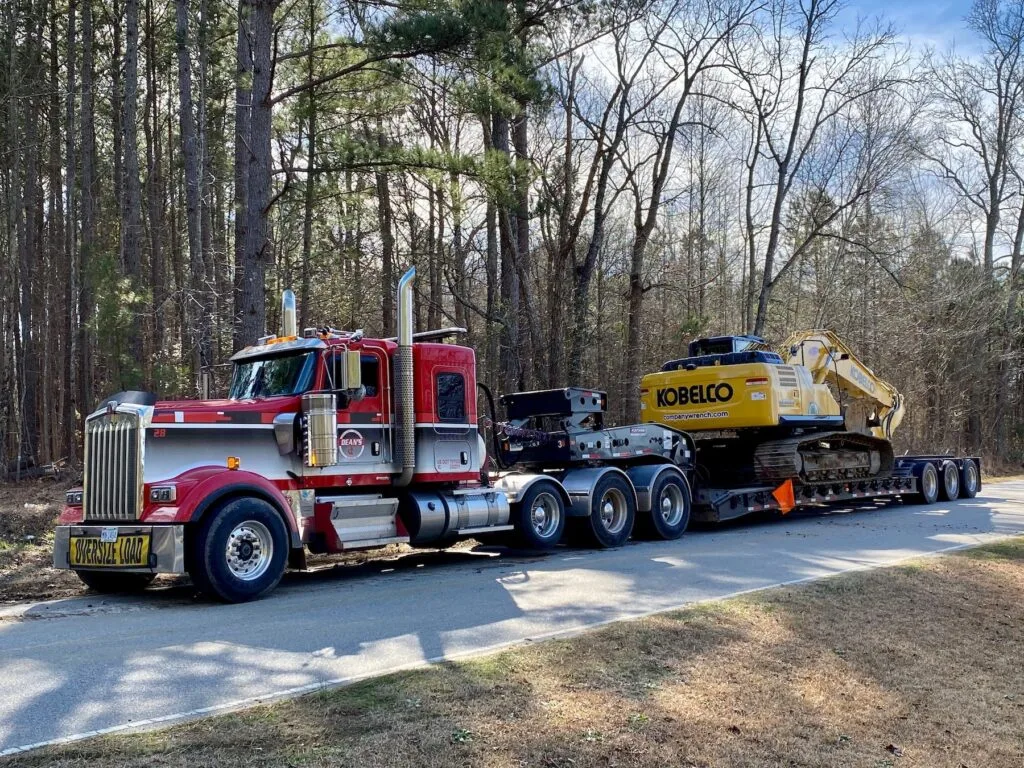

Truck Driving Tips
Have you ever driven under hazardous road conditions or seen other drivers engaging in risky behavior? Rain, fog, snow, and ice are just some of the perils truck drivers confront on a daily basis. Truck drivers have a responsibility to themselves and everyone else on the road to take trucking safety seriously. Safely operating a vehicle of that size requires a driver that’s alert, professional, and knowledgeable about all the major truck driving safety topics.
- Tips for New Truck Drivers
-
Defensive Driving Tips for Truck Drivers
- Watch Your Speed
- Keep Your Distance
-
Winter Weather Driving Safety Tips
- Check Weather Updates
- Use Winter Tires
- Be Alert and Keep Control
-
Commercial truck driver safety tips
- Plan Your Route
- Prepare for Long Drives
-
Semi-Truck Safety Tips
- Be Aware of Your Size
- Remember Your Blind Spots
- Contact Logity Dispatch for More Information
The National Highway Traffic Safety Administration reports that trucker fatalities are at their highest level in more than three decades. That’s why we’re happy to share truck driver safety tips we’ve learned over the years as a dispatch company in this industry. This includes truck tips for new drivers and semi-truck drivers, as well as those looking to learn more about defensive driving, commercial driving, and winter driving. If you’re familiar with one or more of these topics, we still suggest giving them a read. If you’re on the road as much as our drivers, there’s no downside to knowing these truck driving tips inside and out.
Tips for New Truck Drivers
Whether you’re new to driving a truck or new to driving altogether, you should be trying to form positive habits early on. These new truck driver tips cover the basics, but they still get overlooked at times by experienced drivers who become overconfident. To ensure that every drive goes as safely and smoothly as possible, it’s essential that you:
- Always Wear Your Seatbelt. This may seem like a no-brainer, but far too many truck drivers neglect to wear their seatbelts. The size of a truck, when compared to smaller vehicles, makes people feel invincible. The reality is over 40 percent of crash-related deaths happen every year due to people not wearing their seatbelts. Get in the habit of always putting your seatbelt on, even if it’s only for a short drive you’ve done a thousand times.
- Don’t Use Your Cell Phone. No driver should be using their cell phone while driving. It’s so dangerous, in fact, that using a handheld mobile phone is actually illegal in the majority of states. Using your cell phone just isn’t worth it, no matter if you’re trying to make a phone call or just taking a quick glance at your screen. All it takes is a few seconds for you to get in a serious accident.
- Sleep and Eat Well. Being alert is an essential aspect of road safety, especially for new drivers who may be less familiar with their surroundings. Not sleeping or eating enough can cause both drowsiness and dizziness, which are two of the last things you want to experience when operating a vehicle. If you do decide to stop to rest and eat, it’s recommended that you avoid really heavy meals and sugary drinks, as they could just make the drowsiness worse.
- Take No Drugs or Alcohol. There’s a reason why it’s illegal. Both drugs and alcohol impair your judgment and affect your physical abilities. Many may assume drugs, in this case, to be exclusively referring to illegal and/or recreational drugs. However, even drugs that are prescribed to you by a doctor can be dangerous, depending on their side effects.
That’s why it’s necessary to ask your doctor whether or not it’s safe for you to drive while using your medication. Neglecting to do so could cost you your job or, worse — your life.
Defensive Driving Tips for Truck Drivers
Defensive techniques and truck driver safety tips help protect you and your vehicle from bad weather conditions and others on the road that may be driving recklessly. It’s recommended that you incorporate these tips into your driving habits early on.
Watch Your Speed
Speed limits are there for a reason. Speeding can be dangerous for you and everyone else on the road, no matter how good of a driver you think you are. Be conscious of your speed as you’re driving, and keep an eye out for speed limit signs along the way. At high speeds on interstate highways, it only takes two seconds for something bad to happen, so you should always be on the lookout. Remain calm.
Keep Your Distance
There should be a considerable amount of stopping distance between you and the vehicle ahead of you, especially if you’re driving a large truck. If you’re unable to stop in time, hitting the vehicle in front of you could be fatal. Keep a safe distance behind the car. At 40 miles per hour, the FMCSA says that you should give yourself one second for every 10 feet of vehicle length. If you’re going faster than 40 miles per hour, add a second. The average length of a Class A tractor-trailer combination is 72 feet, so your following distance should be 7 seconds below 40 miles per hour and 8 seconds above 40 miles per hour. You can figure out this distance by picking a spot on the road and figuring out how long it takes between when the car in front of you passes that spot and when you get there.
Slow Down for Turns
Given the size of your truck, you should be extra careful when making turns on the road off an off-ramp.
Beware of Intersections
One of the most dangerous places for any driver to be is at an intersection. Over 80% of accidents that hurt or kill people in cities happen at signal-light intersections. Most accidents at controlled intersections happen in the four seconds after the light changes.
To lower your risk, slow down as you approach a green light and make sure to look left, then right, then left again. The first thing that could hurt you is cars coming from your left. If the intersection is “blind,” meaning you can’t see the traffic on the cross street until it’s very close, slows down even more.
Winter Weather Driving Safety Tips
Driving during winter comes with additional risks and obstacles, especially if you’re driving further north and aren’t familiar with the conditions. Here are a few things you should do as a truck driver to keep yourself and your fellow drivers safe this winter.
Check Weather Updates
Truck drivers should take extra care in checking weather updates on a regular basis. This will help you plan your safest possible route and reduce the chances of you getting caught up in a surprise snowstorm.
Use Winter Tires
For most of the country, winter weather necessitates new tires with more tread. These winter tires also referred to as snow tires, could save you from sliding into another vehicle or not being able to make it up an incline.
Be Alert and Keep Control
During winter, it’s more important than ever to keep control of your vehicle. The ice on the road could cause you to slide if you lose control for too long and don’t know how to correct it. Being alert is also critical, as other drivers could be at risk of accidentally sliding into your path.
Commercial truck driver safety tips
Commercial drivers, or those authorized to drive commercial vehicles weighing over 26,000 pounds, likely do so as a profession. Thankfully, we have safety tips that make you a safer truck driver and more efficient at your job.
Plan Your Route
Whether your destination is 20 minutes or 20 hours away, planning your route with care is the right thing to do. If you want to reach your destination safely AND on time, knowing your driving hours and routes ahead of time will save you from having to rush or improvise on the spot.
Prepare for Long Drives
If you are about to embark on a multi-hour drive, there are a few things you can do to prepare. The first is to wear comfortable, loose-fitting clothing that doesn’t cut off your circulation. You should also make sure that you get enough sleep the night before and that you have healthy snacks/meals prepared for the breaks you’ll be taking along the way. Having all these things taken care of will reduce distractions and help you focus on driving.
Semi-Truck Safety Tips
Needless to say, a lot of different vehicles are considered trucks. These include pick-ups, tankers, tow trucks, and a semi-tractor-trailer truck, commonly referred to as a semi-truck or a transport truck. Semi-trucks are commonly used by commercial drivers, as they haul a trailer that can transport freight of almost any size. To drive them safely, you should try to:
Be Aware of Your Size
If you’re transporting freight from place to place, the height and weight of your semi-truck are going to be inconsistent. Take note of your vehicle’s size before driving, and be mindful of that size as you take turns, pass vehicles, etc. To stay safe, it’s recommended that you always designate some extra space around your vehicle to act as a cushion and prevent collisions.
Remember Your Blind Spots
The sheer size of a semi-truck guarantees that you’re going to have more blind spots than those driving smaller cars. These blind spots could be in several places, including behind your mirrors, in front of the cab, or directly behind the truck. Be conscious of these blind spots, and adjust your driving accordingly to avoid accidents.
Contact Logity Dispatch for More Information
As a dispatch company, ensuring that our truck drivers follow these truck driver safety tips is our top priority. We believe that driving responsibly is crucial to meeting the expectations of our clients. The reason? Truck drivers that follow these truck driver safety tips, such as being attentive to weather conditions and planning out routes ahead of time, are both consistent and reliable.
If you have any questions about truck driving safety, please don’t hesitate to contact us. Our professional staff would be happy to provide you with more information. Give us a call at 302 425 92 99.






